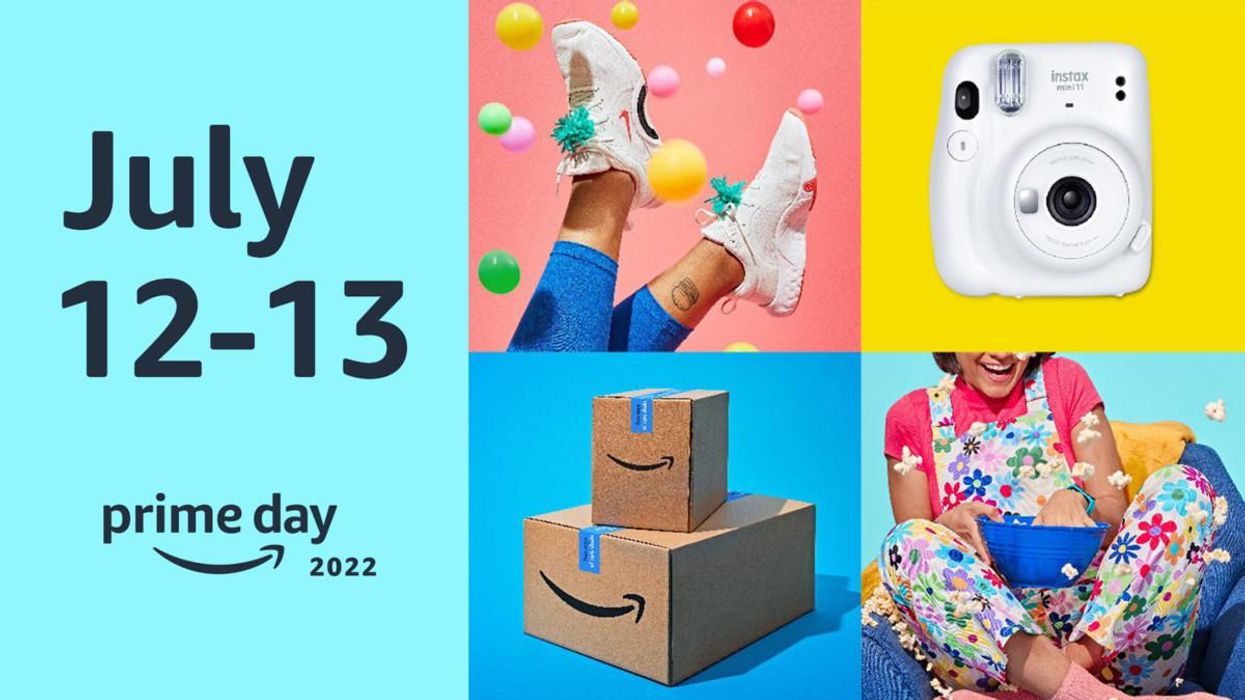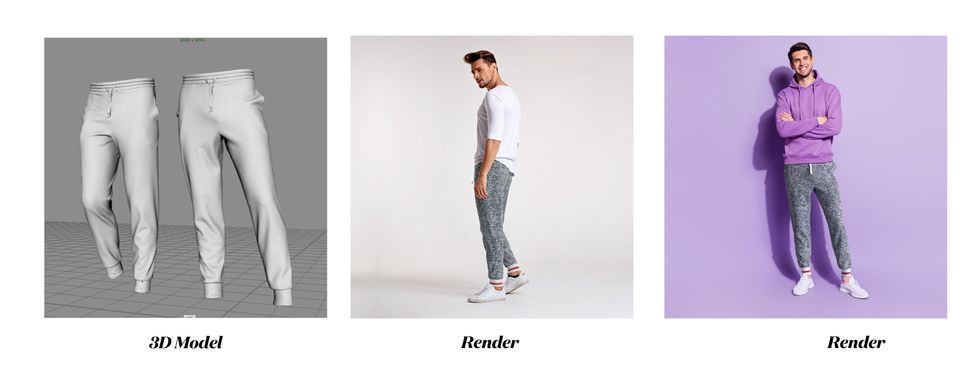Retail Channels
14 July 2022
Americans spent nearly $12 billion on Amazon's biggest Prime Day yet
Amazon and third-party sellers reported big numbers. Here's what worked.

Prime Day 2022 was Amazon's biggest. (Courtesy photo)
Amazon and third-party sellers reported big numbers. Here's what worked.

Prime Day 2022 was Amazon's biggest. (Courtesy photo)
Amazon Prime Day delivered the two largest days for US ecommerce in 2022.
According to the Adobe Digital Economy Index, US online spending on July 12 and 13 totaled $11.9 billion. This represents 8.5% growth when compared to last year’s total US Prime Day revenue.
Amazon launched Prime Day in 2015, and the ecommerce platform is the primary destination for deals over the two-day event. Adobe's measure of overall US revenue reflects how the day has become so massive that it lifts all in ecommerce, as other retailers hold their own deal events while others double down on marketing at a time when shoppers are interested in buying. Compared to an average June Day, Prime Day brought a lift in online spending of 141%, according to Adobe.
Here’s a breakdown of the two days, according to the Adobe Digital Economy Index:
When it comes to categories that offered the most deals, Adobe said that toys and apparel had the highest volume.
“With ‘back to school’ around the corner and promotional discounts being quite favorable for consumers, we saw accelerated growth momentum for days that have historically produced significant spending,” said Pat Brown, vice president with Adobe.
For its part, Amazon said it had its biggest Prime Day yet on at least two measures: Prime members purchased more than 300 million items worldwide, and saved over $1.7 billion, the company said. The company did not share exact sales figures.
Amazon said the top-selling categories in the US were consumer electronics, household essentials and home. The company listed more top-selling worldwide products as follows:
Some of the best-selling items worldwide this Prime Day were from premium beauty brands, including LANEIGE and NuFACE; Apple Watch Series 7; diapers and wipes from Pampers and The Honest Company; kitchen essentials from Rachael Ray, Le Creuset, and Hamilton Beach; VTech and LeapFrog toys; Vital Proteins Collagen Whey; Levi's apparel and accessories; Chemical Guys car wash products; and pet products from NUTRO, TEMPTATIONS, and GREENIES.
Amazon said sales growth among the small and medium-sized businesses that make up the platform’s third-party seller community outpaced the uptick for its own retail business.
When compared with 2021, Prime Day results exceeded expectations with sellers, even among those who did not arrange any official Prime Day deals, said Jon Elder, who consults with Amazon sellers as founder and CEO of Black Label Advisor.
“Sellers experienced incredible sales numbers during Prime Day,” said Elder. “This was driven by the fact that so many are overstocked and had extra attractive deals. While sellers might not have made their desired profit margin for Prime Day, they moved an incredible amount of inventory.”
There was widespread Prime Day Deal creation in sellers’ catalogs, as they put forward steep discounts to move stale inventory that was mismatched to trends due to supply chain delays. Along with more deals, Elder said he saw sellers increase PPC budgets by 2-3x on average for maximum visibility to attract as much traffic as possible. Even sellers who did not have any Prime Day deals or increased PPC budgets saw sales reach 3x an average day on Amazon. To stand out in organic search results, sellers also turned to coupons to offer 5-15% off or $1-5 off, depending on the product’s price.
When it came to promotional strategies on the wider web, Adobe said email, paid search and social networks saw the biggest increase in revenue contribution lift during Prime Day.
Amazon itself unfurled a bevy of strategies to attract shoppers, as well. It put a big push behind its livestreaming platform Amazon Live, which attracted 100 million views during the two days. The effort also included looking beyond its own ecosystem. While some commented before the event that Amazon marketing wasn’t as visible as in past years, it might be the case that it was more targeted than usual. Elder said it was clear that the company turned to influencers on social media platforms such as Instagram to promote Prime Day.
“What’s even more interesting is that depending on the social media influencer, they promoted the best Deals in a category that fit the demographic for their following,” Elder said. “I truly believe this was something that moved the needle in a big way this year. Expect even more promotion through influencers in 2023.”
The trove of discounts offered through Prime Day was likely a welcome relief to shoppers who have been seeing rising prices on goods for months. As Prime Day was entering its second half on Wednesday, the US Bureau of Labor Statistics reported that the US inflation rate increased to 9.1% in June, marking the latest in a series of 40-year highs this year.
“Americans were out for a deal with historic inflation and sellers delivered,” Elder said. “In many ways, it was an impeccable timing by Amazon.”
The continued success of Prime Day despite pressure on consumer wallets offers a reminder that shoppers won't necessarily stop spending. Rather, they will change their priorities in how they evaluate what to buy.
“It’s apparent that consumers are incredibly price conscious, and it will be important for retailers to leverage price effectively, in order to unlock new growth potential online,” Adobe’s Brown said.
Amazon partnered with Hexa to provide access to a platform that creates lifelike digital images.
A 3D rendering of a toaster from Hexa and Amazon. (Courtesy photo)
Amazon sellers will be able to offer a variety of 3D visualizations on product pages through a new set of immersive tools that are debuting on Tuesday.
Through an expanded partnership with Hexa, Amazon is providing access to a workflow that allows sellers to create 3D assets and display the following:
Selllers don't need prior experience with 3D or virtual reality to use the system, according to Hexa. Amazon selling partners can upload their Amazon Standard Identification Number (ASIN) into Hexa’s content management system. Then, the system will automatically convert an image into a 3D model with AR compatibility. Amazon can then animate the images with 360-degree viewing and augmented reality, which renders digital imagery over a physical space.
Hexa’s platform uses AI to create digital twins of physical objects, including consumer goods. Over the last 24 months, Hexa worked alongside the spatial computing team at Amazon Web Services (AWS) and the imaging team at Amazon.com to build the infrastructure that provides 3D assets for the thousands of sellers that work with Amazon.
“Working with Amazon has opened up a whole new distribution channel for our partners,” said Gavin Goodvach, Hexa’s Vice President of Partnerships.
Hexa’s platform is designed to create lifelike renderings that can explored in 3D, or overlaid into photos of the physical world. It allows assets from any category to be created, ranging from furniture to jewelry to apparel.

The result is a system that allows sellers to provide a new level of personalization, said Hexa CEO Yehiel Atias. Consumers will have new opportunity see a product in a space, or what it looks like on their person.
Additionally, merchants can leverage these tools to optimize the entire funnel of a purchase. Advanced imagery allows more people to view and engage with a product during the initial shopping experience. Following the purchase, consumers who have gotten a better look at a product from all angles will be more likely to have confidence that the product matches their needs. In turn, this can reduce return rates.
While Amazon has previously introduced virtual try-on and augmented reality tools, this partnership aims to expand these capabilities beyond the name brands that often have 1P relationships with Amazon. Third-party sellers are an increasingly formidable segment of Amazon’s business, as they account for 60% of sales on the marketplace. Now, these sellers are being equipped with tools that enhance the shopping experience for everyone.
A video displaying the new capabilities is below. Amazon sellers can learn more about the platform here.
Hexa & Amazon - 3D Production Powerhousewww.youtube.com